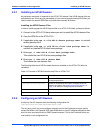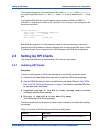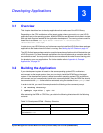
System Management Interface Based on HPI-B (Centellis 4620) User’s Guide (6806800D85A)
Using HPI-B Limitations with Respect to HPI-B AdvancedTCA Mapping Specification
24
4.2.2 Limitations with Respect to HPI-B AdvancedTCA Mapping
Specification
The following limitations apply with respect to the compatibility with the HPI-B-AdvancedTCA
mapping specification SAIM-HPI-B.01.01-ATCA. Note that these limitations apply to the current
and also to all future Emerson HPI-B releases. There are no plans to implement these features
in the future.
z Only physical slot numbers are supported
Emerson HPI-B only supports physical slot numbers in entity paths
z Only "shall" and "should" requirements are supported
Emerson HPI-B only supports the "shall" and "should" requirements of the HPI-to-
AdvancedTCA mapping specification SAIM-HPI-B.01.01-ATCA.
4.3 Working with the Multishelf Library
The multishelf HPI library allows your application to connect to and manage several shelves at
the same time. For this purpose the multishelf library provides several HPI controls which allow
the application to manage the connection to shelves and also to dynamically add and remove
shelves to the HPI environment. This section provides all the information that you need to know
in order to use these HPI controls and work with the HPI multishelf library.
4.3.1 Overview
HPI uses the concept of domains. Generally, a domain represents one shelf. Furthermore there
is a default domain. It acts as a container for all other domains and does itself not represent
actual hardware.
It is possible for multiple domains to represent the same physical shelf. This is for example the
case in typical AdvancedTCA systems which often provide two shelf managers with an HPI
daemon running on each of them.


















